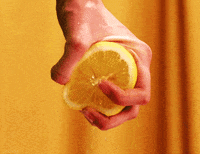Compress web images without losing quality!!
1. Installation 🍺
Install the homebrew package for webp.
$ brew install webp
2. Usage 💻
here’s the synopsis found in the official documentation
cwebp [options] input_file -o output_file.webp
From the documentation: Using -q float as an option -
Specify the compression factor for RGB channels between 0 and 100. The default is 75.
In case of lossy compression (default), a small factor produces a smaller file with lower quality. Best quality is achieved by using a value of 100.
In case of lossless compression (specified by the -lossless option), a small factor enables faster compression speed, but produces a larger file. Maximum compression is achieved by using a value of 100.
With that, a decent default to get pretty high quality, well compressed webp image would be:
$ cwebp -q 80 image.png -o image.webp`
Let’s take a 12 megapixel (3024 × 4032) photo shot on an iPhone 13.
you can see below that we’re dealing with a pretty hefty JPG! 4.3 MB! Wouldn’t want to load that image.. on the web!
➜ webp ls -lh
total 8816
-rw-------@ 1 remyhunter staff 4.3M Dec 6 16:47 original.JPG
So we can run a little magic…
➜ cwebp -q 60 original.JPG -o new.webp
Saving file 'new.webp'
File: original.JPG
Dimension: 4032 x 3024
Output: 1818614 bytes Y-U-V-All-PSNR 38.83 47.75 47.84 40.32 dB
(1.19 bpp)
block count: intra4: 32324 (67.87%)
intra16: 15304 (32.13%)
skipped: 367 (0.77%)
bytes used: header: 547 (0.0%)
mode-partition: 189165 (10.4%)
Residuals bytes |segment 1|segment 2|segment 3|segment 4| total
macroblocks: | 14%| 24%| 20%| 41%| 47628
quantizer: | 27 | 24 | 19 | 13 |
filter level: | 8 | 6 | 4 | 9 |
..But doesn’t give us a perfect result. we’re losing some information and color data…
Here’s the side-by-side. left: original, right: compressed.

Look at that color loss in the compressed version. We could do way better than this!
Improvements ✨
I discovered that in order to retain the color information, we must retain the metadata. This was a bit confusing becuase the color spaces were both listed as RGB, but maybe there’s something we couldn’t see..
Regardless, I ran the following:
$ cwebp -q 60 original.JPG -metadata all -o compressed_withmetadata.webp
here’s a side-by-side with with this new image
The compression here is from 4.2M -> 1.2M which is pretty significant savings at 13 megapixels

The Verdict ⚖️
pros:
This comparison is considerably more accurate than the previous example,
So this is the magical command that works really well.
$ cwebp -q 60 [original] -metadata all -o [new-image.webp]
cons:
Desktop editing software isn’t up to date with webp encoding and decoding, so you won’t be able to perform edits after converting your image.
- Always keep the original images somewhere safe!
- Edit before you compress
- (Editing includes adjusting size)
Thanks for reading! Enjoy the size savings!
